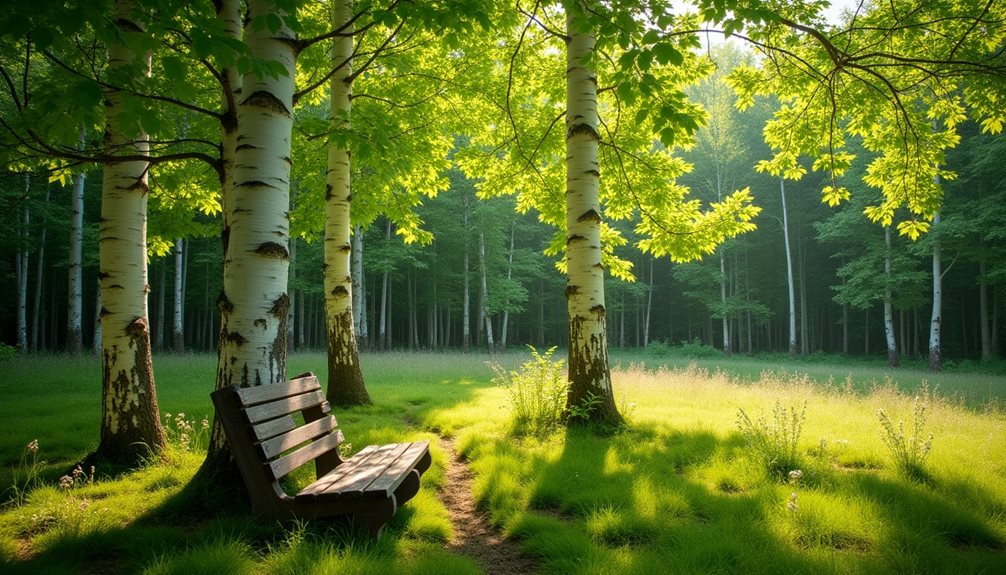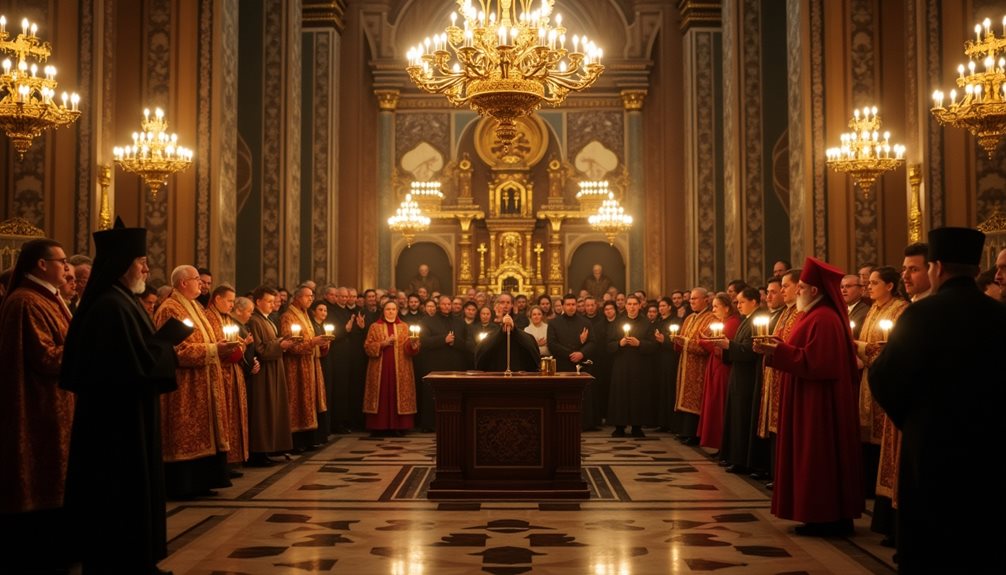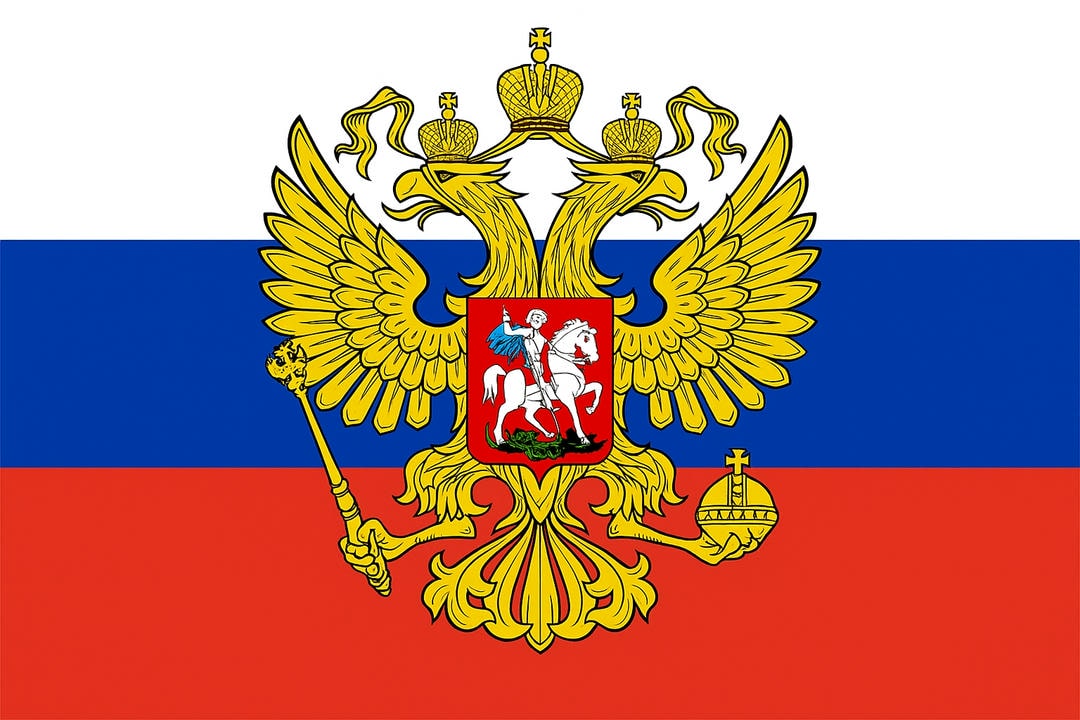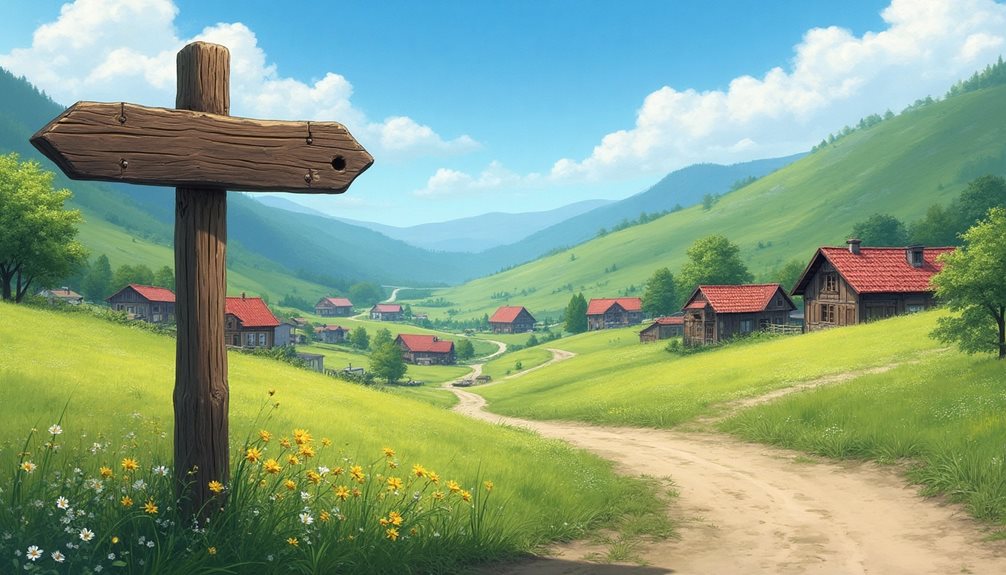Birch trees hold a profound significance in Russian culture, embodying beauty and resilience. Their striking white bark and delicate leaves evoke deep emotional connections, particularly for those distanced from their homeland. Historically, birches have served practical purposes, from providing warmth to medicinal uses. This multifaceted relationship prompts an exploration of how birches influence Russian art, literature, and humor today. What lies beneath this enduring affection for a simple tree?
The Cultural Symbolism of Birch Trees in Russia

Birch trees are much more than common features in the Russian countryside—they hold a distinct place in the nation’s identity. Their slender, white trunks and light, quivering leaves appear throughout Russian folk songs, poetry, and art, representing purity, renewal, and the quiet strength associated with the Russian character.
In Russian folklore, birch trees are often linked to feminine beauty and grace. Frequently personified as gentle maidens or protective mothers, birches appear in stories as caring spirits watching over villages and travelers. During springtime rituals, young women would decorate birch branches with ribbons and flowers for blessings of love and fertility. The tree’s association with innocence and youth made it a popular symbol in wedding traditions and coming-of-age ceremonies.
For Russians living far from home, the image of birch groves stirs powerful feelings of nostalgia. Seeing a birch can evoke memories of childhood and family, making these trees enduring symbols of homeland. During times of migration or hardship, birches are often mentioned in poems and letters as representations of longing and hope.
Among ancient Slavs, the birch was considered sacred—thought to bring protection and healing. People hung birch branches above doors to keep out evil spirits and sometimes buried pieces of birch bark beneath new homes to attract good fortune. Even now, the birch stands for resilience and the ability to overcome adversity, echoing the spirit found throughout Russian history.
Visually, the birch’s striking white bark—sometimes marked by black lines—has become a familiar motif in Russian art, symbolizing the coexistence of light and darkness, joy and sorrow. The contrast between white trunks and green forests captures both beauty and complexity, resonating with many Russians on a personal level.
Historical Uses and Practical Applications of Birch
Birch trees have long been essential in everyday Russian life due to their versatility and abundance. Birch wood is both sturdy and easy to shape, making it ideal for furniture, kitchenware, sleds, wheels, and even musical instruments such as balalaikas.
Birch bark held special importance before paper became widespread. From the 11th to 15th centuries, people in Novgorod and other cities wrote letters and official documents on strips of birch bark. Many of these “berestyanaya gramota” have survived to this day, offering insights into medieval daily life.
Craftspeople have used birch bark to make baskets, boxes (tuesa), shoes (lapti), hats, and toys. These items were not only practical but also featured delicate carvings or burned designs reflecting regional traditions.
Birch twigs bundled into whisks (veniks) remain central to banyas (Russian steam baths). These whisks are used for therapeutic massage that stimulates circulation and is believed to have health benefits—a practice that dates back centuries.
Birch leaves, buds, sap, and tar have featured widely in folk medicine. The leaves are brewed into teas for cleansing, while birch tar has been applied to treat skin conditions. Birch extract was also used in early shampoos and soaps for its natural cleansing properties.
During times of scarcity or war, birch bark flour supplemented bread recipes in rural areas, further highlighting the tree’s importance as a resource in difficult times.
The Sweet Appeal of Birch Tree Juice
Birch sap—called berezovy sok—is a cherished Russian beverage with deep roots in tradition. Each spring, as sap rises through thawing trees, families tap birch trunks to collect this clear, slightly sweet juice. The harvesting season lasts just a few weeks in early spring, making fresh birch juice a highly anticipated treat.
Birch juice is rich in vitamins C and B, minerals such as potassium and calcium, amino acids, and natural sugars. Traditionally valued as a tonic after long winters, it was believed to boost immunity and help with recovery from illness. Some folk remedies used it for kidney stones or arthritis.
During periods of hardship—like World War II—birch sap was sometimes one of the few sources of sugar for rural communities. People drank it straight from the tree or preserved it by fermenting or bottling with lemon peel or berries for extra flavor.
Harvesting birch sap involves careful methods to ensure trees stay healthy: a small hole is drilled for a tube to collect the sap, and tapping is stopped well before the tree is harmed. When done properly, a birch can be tapped year after year.
Today, berezovy sok is still enjoyed fresh or bottled—a nostalgic drink that links modern Russians with their ancestors. Some contemporary chefs even use it in cocktails or desserts for a unique flavor.
From art to everyday life to seasonal rituals, birch trees continue to stand as powerful symbols of resilience, ingenuity, and connection to nature in Russian culture. Their presence is both practical and deeply meaningful across generations.
Birch Trees in Russian Art and Literature
Birch trees, with their slender white trunks and delicate leaves, hold a special place in the heart of Russian culture. More than just a common sight across the Russian landscape, birches have become a powerful symbol woven through the nation’s art, poetry, and folklore. Their presence evokes themes of purity, resilience, beauty, and the deep connection Russians feel to their homeland.
Symbolism and Folklore
In Russian tradition, the birch (берёза, bereza) is often called the “tree of Russia.” It represents renewal and hope, as its bright bark stands out even during the long winter months. Folktales frequently depict birches as feminine spirits—graceful and protective—while springtime rituals once asked the birch for blessings of fertility and prosperity. In village festivals, young women would decorate birch branches with ribbons and sing songs beneath them, highlighting the tree’s association with femininity and new beginnings.
Birch in Russian Poetry
Few poets captured the spirit of the birch like Sergei Yesenin. His verses brim with nostalgia and longing for rural Russia, where birches are ever-present. In his poem “The Birch Tree” (“Береза”), Yesenin described early morning light glinting on snowy branches—an image instantly familiar to any Russian reader:
“Under my window
White birch
Covered with snow
Like silver…”
This simple depiction carries layers of meaning: innocence, yearning for home, and a deep-rooted bond with nature. Other poets, such as Alexander Blok and Anna Akhmatova, also turned to the birch as a metaphor for the endurance and quiet strength of the Russian people.
The Birch in Painting
Russian landscape painters have long been drawn to the birch for its striking visual qualities. Alexei Savrasov’s famous painting “The Rooks Have Come Back” (1871) features clusters of birches marking the arrival of spring. The delicate branches contrast with the melting snow and dark rooks overhead, suggesting both change and continuity.
Isaac Levitan, another master of the Russian landscape, often used birch groves to create a mood of peaceful melancholy. In works like “March” and “Golden Autumn,” Levitan’s birches appear luminous against fields and rivers, embodying the quiet beauty of the countryside. Their recurring presence in his paintings reflects both personal affection and a broader cultural reverence for these trees.
![]()
Modern Humor and Nostalgia Surrounding Birches
Birch trees have always been woven into the very fabric of Russian identity—they appear in folk songs, poetry, and paintings as emblems of beauty, resilience, and homeland. However, in today’s digital age, birches have taken on a new life, becoming the subject of both affectionate nostalgia and sharp-witted humor. Social networks are filled with birch-related memes. These range from jokes about Russian patriotism—such as images of people hugging birches with captions like “Every Russian must recharge from the Mother Birch”—to surreal edits where birches are photoshopped into unexpected places, poking fun at their ubiquity. One popular meme features a birch tree in a living room, with the tagline: “For those who miss home too much.”
Actors such as Sergei Bezrukov have leaned into the trend, often posting tongue-in-cheek tributes to birches on their social media. In one widely circulated video, Bezrukov dramatically recites classic poetry to a birch sapling, only to wink at the camera and joke about needing “more oxygen from the Motherland.” These playful homages blend reverence with a distinctly modern sense of irony.
Musical tributes to birches remain popular as well. The traditional song “Во поле берёза стояла” (“A Birch Stood in the Field”) is still a staple at gatherings, but now it’s often performed with a humorous twist—sometimes remixed with techno beats or sung by costumed groups, adding parody while still honoring tradition.
Birch-related nostalgia is also filled with intriguing facts and tales. In some regions, collecting birch sap every spring is both a practical and sentimental ritual. Memes about “birch juice season” circulate every March, joking that true Russians swap soda for birch sap. Historically, birch bark was used during World War II to make makeshift notebooks and even shoes—a testament to resourcefulness that now inspires jokes about Russians being able to “make anything out of birch.”
One viral video shows a young man serenading a birch tree with his guitar to impress his date, ending with the line: “If she doesn’t love you, the birch will always listen.” Comments are filled with people sharing their own affectionate “birch moments,” blending humor with genuine fondness. In another example, an art collective in St. Petersburg once staged a “Birch Parade,” where participants dressed as birches and handed out birch leaf bookmarks inscribed with classic verses, simultaneously celebrating and gently poking fun at this enduring cultural obsession.
Modern nostalgia for birches isn’t just about longing for the past; it’s a way for Russians to embrace self-irony, cherish their roots, and keep beloved traditions alive in fresh and surprising ways.




